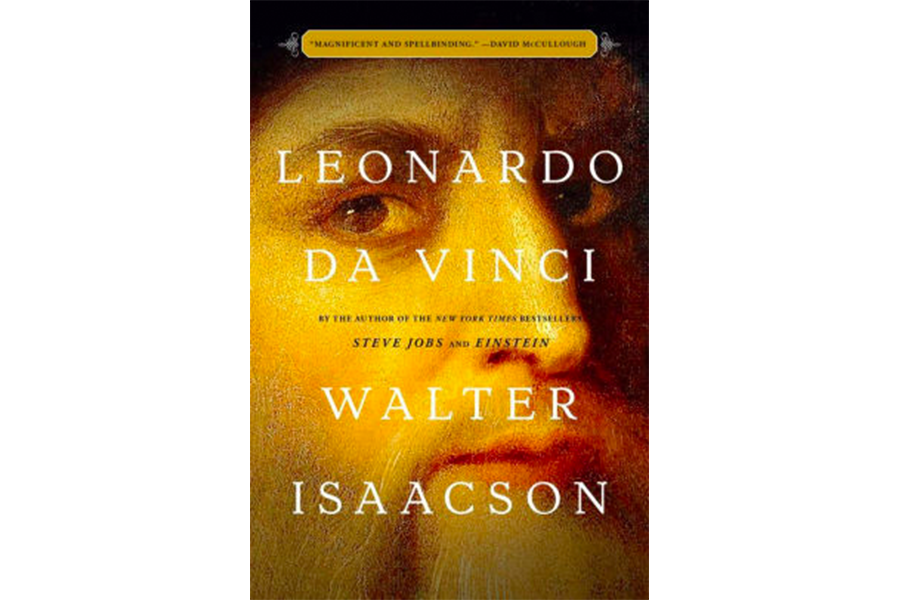'Leonardo da Vinci' may be Walter Isaacson's most unusual subject ever
Loading...
Long before he became a famous biographer, Walter Isaacson cut his professional teeth as a young newspaperman in his native New Orleans, a city known for its vivid eccentrics. Isaacson has been writing about eccentrics ever since, his literary production yielding an aviary of odd birds. His previous books include a biography of Benjamin Franklin, the brilliantly idiosyncratic inventor who also helped create the United States; an account of Albert Einstein, the greatest scientific mind of the 20th century who could not, despite his gifts, keep his hair combed; and the story of Steve Jobs, who sparked a technological revolution even as he navigated an unconventional personal life.
With Leonardo da Vinci, his new life of the iconic 16th-century Italian artist and inventor, Isaacson brings readers into the company of perhaps his strangest subject to date. As in his previous books, he celebrates oddity as an opportunity for greatness, not an obstacle to be overcome.
“His lapses and oddities allow us to relate to him, to feel that we might emulate him, and to appreciate his moments of triumph even more,” Isaacson writes of the man at the center of his latest book.
He begins “Leonardo da Vinci” with a bit of housekeeping, telling readers that “daVinci” can’t properly be used as a surname, since it was merely a descriptor referring to the great thinker’s family roots in Vinci. Isaacson calls his subject Leonardo throughout the book, creating a tone of intimacy with a man who, despite the biographer’s best efforts, retains an air of enigma.
Leonardo (1452-1519) is, paradoxically, one of the most well-documented yet elusive men of the Renaissance. He left an extensive paper trail in some 7,200 pages of writings, but they’re often cryptic, inviting more questions than they answer. Basic facts about his life, such as the site of his birth and death, are also hazy. By necessity, significant parts of “Leonardo da Vinci” must be speculative. In lieu of strict chronology, Isaacson uses paintings and other works of Leonardo as windows into his heart and mind. In that regard, the book’s beautiful production values are a great help. Exacting reproductions of masterpieces such as the “Mona Lisa” tellingly evoke the originals, a big plus since Isaacson attempts to deconstruct their qualities in detail. That painting is such a tourist draw at The Louvre that it tends to endure as an object of publicity rather than reflection, its stature not so much argued as assumed.
Isaacson, to his credit, helps us see Leonardo’s artistic vision with fresh eyes. The “Mona Lisa” exemplifies Leonardo’s digressive intellect – his tendency to move from project to project like a bee sampling nectar, eventually completing some artistic tasks, leaving others eternally unfinished. He started the “Mona Lisa” in 1503, working on it intermittently until shortly before his death. “What began as a portrait of a silk merchant’s young wife became a quest to portray the complexities of human emotion, made memorable through the mysteries of a hinted smile, and to connect our nature to that of the universe,” Isaacson observes. “The landscape of her soul and of nature’s soul are intertwined.” That duality is evident in the painting’s background, which features a mountain landscape that acts as another character in the scene.
Isaacson concludes that Leonardo’s outsider status helped feed his development. Born out of wedlock, he was prevented from pursuing mainstream professions and denied the chance to attend the respectable “Latin schools” where intellectual conformity was encouraged. That “saved him from being an acolyte of traditional thinking,” Isaacson writes. Leonardo’s homosexuality further distanced him from the orthodoxy of his times.
Leonardo kept his own counsel in his notebooks, which Isaacson calls “the greatest record of curiosity ever created.”
Questions freckled his days. “Why is the fish in the water swifter than the bird in the air,” he asks, “when it ought to be the contrary since the water is heavier and thicker than air?”
He freely indulged fantasy, conjuring ideas for tanks and aircraft that were centuries ahead of their time. “Even at the height of his career,” Isaacson notes, “most of his fighting and flying contraptions were more visionary than practical.”
Isaacson’s roots as a journalist serve him well. He writes simply and clearly, and even though his principal character hails from antiquity, the narrative hums like a headline from the morning paper, alert to topical parallels between then and now.
“His genius was of the type we can understand, even take lessons from,” Isaacson writes. “It was based on skills we can aspire to improve in ourselves, such as curiosity and intense observation.”
Isaacson sometimes lapses into the homiletic. Not quite confident that readers can draw their own conclusions about Leonardo’s life, he ends “Leonardo da Vinci” with a small tutorial listing the lessons we should learn, including such truisms as “Let your reach exceed your grasp.” One occasionally feels that one of humanity’s most darkly complicated geniuses has been appropriated as a stand-in for Dale Carnegie.
Despite Isaacson’s suggestions for emulating Leonardo, we finish the book with a renewed conviction that the world’s most famous Renaissance man was, in essence, inimitable.
Danny Heitman, a columnist with The Advocate newspaper in Louisiana, is the author of “ Summer of Birds: John James Audubon at Oakley House.”







